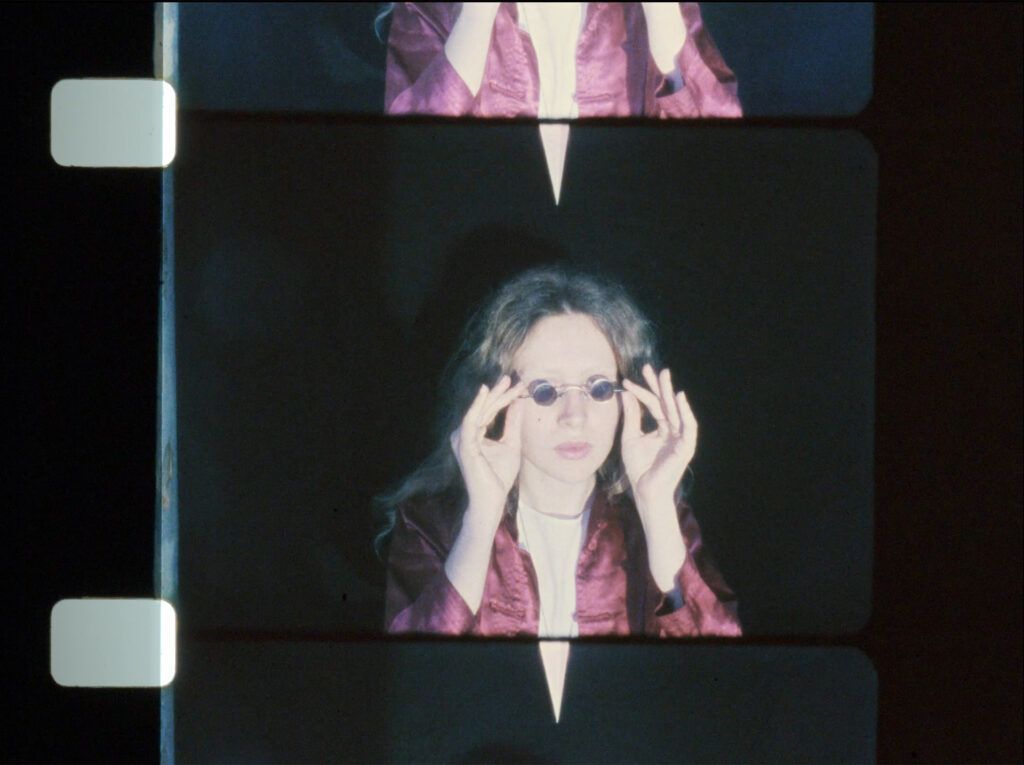
Ieva Balode, one of the founders of the self-managed Latvian Baltic Analog Lab, brings us a carte blanche with some of the most exciting work created by the collective.
Founded in 2016, the laboratory’s activity ranges from production to education and organising events (such as the Process Festival). This selection brings us works produced over the last two years at the BAL, which not only show an interest in creation through analogue cinema, but also bear witness to the imprint these that these times we have had to live through are leaving on our minds. These are films that call for introspection, full of pregnant, symbolic images that in many cases examine one’s own life, memories, one’s own conception of being and an exploration of one’s inner world. At the same time, the very act of playing with the photochemical processes beyond artisan development of the film (chemical manipulation, scratching of the film, etc.) also reveals the yearning brought to us by these years of social distancing and phobia of human contact to return to the nature of touch.
As for memory, The Bearers of Memories by Miglė Križinauskaitė-Bernotienė introduces the idea of the Siberian concept of time, in which what we have ahead of us is our past, the known, and what we have behind us is the future, what is yet to be seen, thereby weaving a delicate reflection on the theme that revolves around faces, photographs and landscapes, playing between colour (through filters) and black and white. The passage of time is also the underlying idea, for example, in ?, by Betija Zvejniece. Bonds of Time by Henrijs Laķis, for its part, shifts between a somewhat casual, diary-like register and a series of mises-en-scène to review the meaning of life in common, love and human ties. Perception (an integral part of memory) is the basis for Père au ciel, by Kei Sendak, which is built upon perception’s fragmentary and nebulous nature via a journey on a Belgian train. And perception, in this case of time, is another aspect addressed by works such as Center Fugue by Roberts Vanags, who uses the musical form of the fugue to translate this theme into images.
The idea of finding a certain meaning in one’s own being (whether on a path towards restlessness or towards inner peace) can be found in works such as The Silva Method by Mersedes Margoite, who through her images transmits the mental states that can be achieved through meditation: the use of double exposures and choreographed moments packed with synesthesia and symbolism help to do so. Realitis, by Sintija Andersone, conjures up a series of dreamlike images riddled with double exposures and interventions on the celluloid strip in a film that seems to be seeking a kind of elusive peace of mind. Corpos Mentis by Linda Lindenberga, on the other hand, examines what it means to inhabit a body and also the possibilities of abandoning the forms of control we exercise over ourselves, mixing theatrical black and white choreography with ethereal images in colour.
In a nocturnal film with contrasting black and white, and with some images of Bergmanian roots of out-of-body experiences and darkness, Thanatophobia by Ieva Balode and Michael Higgins deals with the fear of the unknown: death, which inexorably hovers over life, and here finds its echo in decomposing celluloid: the fearsome, captivating forms it takes in the film entrap us.
Finally, from a more cerebral than sensory point of view, Paul Kuimet makes a sharp cultural analysis in his piece Material Aspects. A collagist’s table and its apparently random cross-references take us through the remains of communist ideology in Eastern Europe, without leaving aside a reflection on the materiality and structure of the film.





